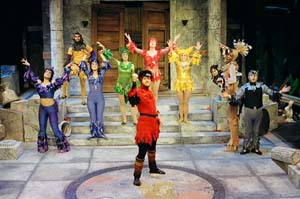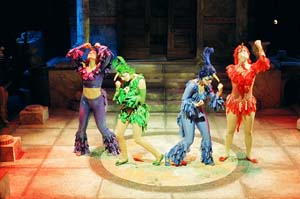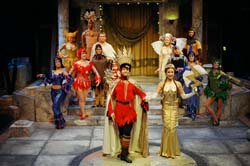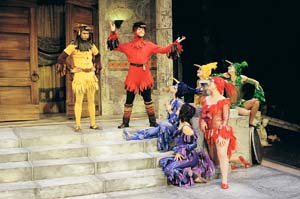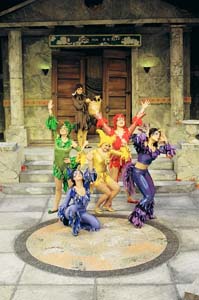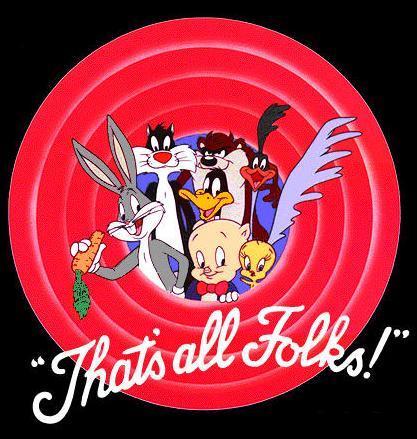 |
|
|---|---|
Well, at long last our month long journey through comedic characters and how comedians use them in film and theatre is at an end. If you've read our page this far we congratulate you, all the farther we would probably manage to get is the pictures. You probably also now know as much as we do about what the content of this specific little page should be. If this is the case, stop now, go outside and enjoy yourself, reading further is a waste of perfectly good time in which to enjoy life. If, however, you're as lazy as I am and insist we do your thinking for you, well, read on. The use of archetypes and stereotypes is common to comedy in all ages. The Greeks did it, the Romans did it, Chaplin did it, and we still do it. The stereotypes have changed with the cultures but the use of the dynamic between rich and poor, powerful and impotent is as funny as ever. Both Aristophanes and Frank Capra knew how to flawlessly switch between blocking characters, though Aristophanes' best demonstration of this was in Birds, which we didn't analyze in detail (we linked it though: check it out, it's a great read. Also the pictures were too good to leave off entirely, so, well, you see them in all their glory). We have seen plays wholly dependant on character, like Terence's Adelphoe and Goin' to Town, and plays where character is thrown out the window (or blown up with cigarettes in the powder room) like Road to Morocco. With the exception of It Happened One Night the vast majority of the characters were very flat. The playwrights commonly used a rounding at the end of the play for more comedy and to finish the play's message. In some plays the stereotypes were used to opposite effect for more comedy. Some plays, Road to Morocco is a good example, have characters that Aristotle could apply his classification to, while others really don't. The most important part is we laughed. A lot. At the wrong time. Or at the right time. Regardless, the use of character in comedy is widely varied but largely dependant on at least a cursory knowledge of the cultural stereotypes being presented or spoofed. We hope we have given you a background on some of these stereotypes that will make you laugh more when reading these plays or watching these films. Well... |
|
Click on Pics for original site |
|
For questions or comments, please contact John Gruber-Miller |
|

